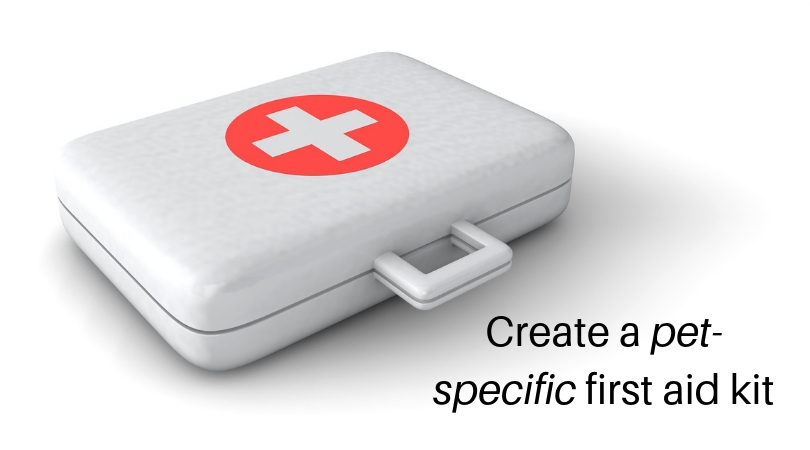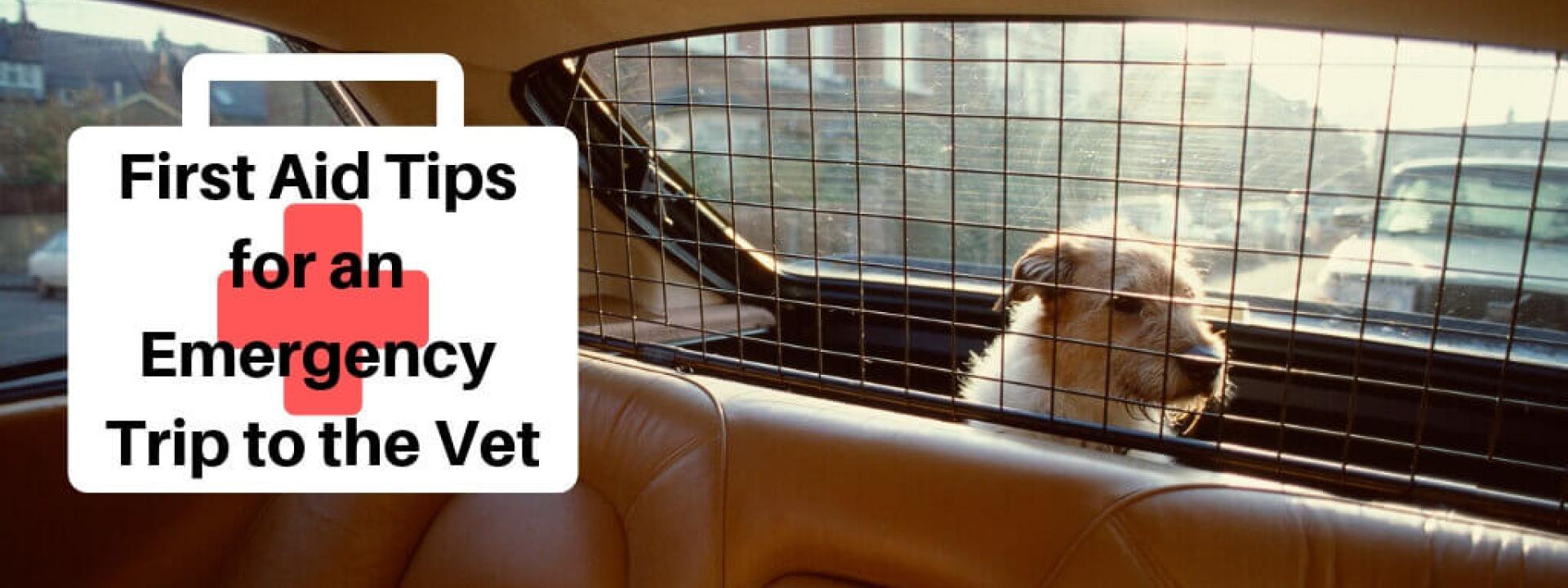If your dog or cat had an accident, would you know how to stabilize them before transporting them to the vet or to an emergency veterinary care center? The goal of National Pet First Aid Awareness Month in April is to ensure pet owners are aware of basic actions to take in the case of a pet-related emergency. Here are some tips to remember if your pet has an emergency:
Pet First Aid Tip #1: Don’t Panic
This is the most important thing to remember during a cat or dog emergency (or really any emergency for that matter). Of course, that’s a lot easier said than done, but just remember, you can’t help your pet to the best of your abilities if you’re anxious or panicking. If you stay calm, your dog or cat will stay a lot calmer as well. If you panic, your dog or cat will pick up on your anxiety and share in it. By staying calm and collected, you’ll be able to make better decisions, keep your pet calm, and also have a safer car trip.
Pet First Aid Tip #2: Make a Plan Ahead of Time
This goes hand-in-hand with tip #1. The best thing you can do to stay calm in a dog or cat emergency situation is to educate yourself ahead of time so you can be confident that you know what to do. Be prepared with a pet-specific first aid kit.

The American Veterinary Medical Association recommends the following supplies for your pet-specific first aid kit:
- Antibiotic ointment (ensure that it is safe for use on pets)
- Pet specific, non-sticky bandages and tape (do NOT use human adhesive bandages on pets)
- Gauze
- Blunt bandage scissors
- Digital “fever” thermometer (the temperature scale of a regular thermometer will not go high enough for pets)
- Plain saline
- Tweezers
- Slip leash
- Muzzle
Additionally, keep your pet’s current medical records in an easy-to-access location (and where they won’t get lost), as well as contact information for your regular vet and contact/location information for the closest pet emergency care facility.
Pet First Aid Tip #3: Don’t Cause more Damage/Trauma/Pain
This may sound like a no-brainer, but trying to help your pet could actually harm him or her even more. Try to stabilize your pet, and then wait until you can get in contact with a pet health professional to do anything further.
Some pet first aid do’s and don’ts include:
- Do be reassuring to your pet in voice and demeanor. This will help keep them a bit still and calm, and it will keep you calm, too!
- Do stop bleeding if you can. You can try to remove large debris from wounds and/or flush wounds with clean water. Wrap bleeding areas gently with gauze to contain bleeding (don’t attempt to put too much pressure on wounds).
- Don’t flush or clean wounds with hydrogen peroxide or alcohol. This can cause tissue damage and/or additional pain to your pet, which may lead to fear bites.
- Do your best to determine the cause of the problem. If your pet is experiencing stomach problems, is it due to ingesting something poisonous or eating something that is causing a blockage? What and how much was eaten or is stuck? If a food, cleaning, or other household item was ingested, do you have the packaging? The amount and ingredients will be helpful.
- Don’t do things for your pet just because you might do them for a human. Certain human medications, even for first aid, can be dangerous for pets. And you can’t explain to pets what you’re doing, so if a first aid procedure may cause pain or distress, you risk someone getting hurt out of reactions to pain or fear.
In the case of a broken bone, you may do more damage or cause pain by applying too much pressure or restraint, leading to a bite.
For choking emergencies, place your fingers in your pet's mouth to see if you can remove the blockage. Don’t put your hands down your pet’s throat as this could push the blockage farther back into the throat, and could lead to further injury of your pet or you being bitten.
Always contact your veterinarian or local poison control center before inducing vomiting or treating an animal for poison. Inducing vomiting with peroxide, milk of magnesia, or activated charcoal can lead to injury if the ingested material is caustic or sharp.
Pet First Aid Tip 4: Travel Safely
The last thing you want to do is to make your pet’s injury worse by accidentally harming them en route to the veterinary clinic or ER. Follow these tips to stabilize your pet and safely transport him or her in an emergency situation:

- If your pet is in distress, make sure to approach them slowly and calmly.
- Kneel down and calmly say his or her name.
- If your pet shows aggression, towels or gauze may be used around the head or neck to attempt to keep them from biting you (but if your pet is vomiting, do not muzzle him!).
- If your pet is too large for a carrier, create a makeshift stretcher (a door, board, blanket, or floor mat may be used) and gently lift him or her onto it.
- Take care to support the neck and back in case they have suffered any spinal injuries.
- Once secured, immediately transport him or her to an emergency pet clinic. If possible, have one person drive and a passenger call ahead to alert the staff to your pending arrival.
Most people would rather not think about their beloved pet having an accident or traumatic injury, but the truth is, the more you think about it and plan for it possibly happening, the better prepared you will be if the situation ever arises.
Take some time during National Pet First Aid Awareness Month to put together a pet first aid kit, as well as an emergency plan, and you’ll be able to adequately help your pet in the event of a crisis. If you have any more questions about creating your kit or planning ahead, feel free to contact us!
